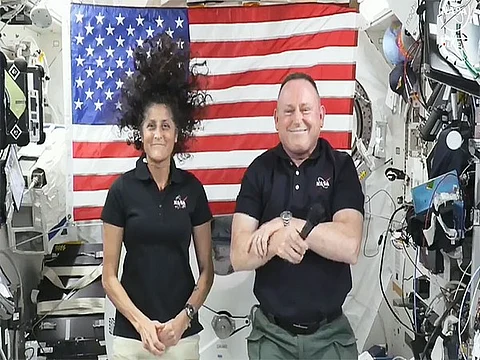

The National Aeronautics and Space Administration (NASA) astronauts Sunita Williams and Butch Wilmore are now scheduled to return to Earth in mid-March, earlier than previously planned, as stated in a report by the Economic Times.
This adjustment follows delays caused by technical issues with Boeing's Starliner spacecraft, which extended its mission aboard the International Space Station (ISS) to over eight months.
To facilitate their earlier return, NASA has partnered with SpaceX to utilise a previously flown Crew Dragon capsule, named Endeavor, for the upcoming Crew-10 mission. This decision addresses production delays of a new capsule and moves the Crew-10 launch date to March 12, 2025, from the earlier target of March 25. The adjustment aims to reduce the extended duration of Williams and Wilmore's mission.
The Crew-10 mission will carry a four-member team to the ISS, including NASA astronauts Anne McClain and Nichole Ayers, JAXA astronaut Takuya Onishi, and Roscosmos cosmonaut Kirill Peskov. Their arrival will allow Williams and Wilmore, along with their colleagues Nick Hague and Aleksandr Gorbunov, to return to Earth after a brief handover period.
Williams and Wilmore's mission was initially planned as a short-term assignment. However, technical problems with Boeing's Starliner capsule, including propulsion issues and propellant leaks, led to significant delays. These challenges extended their stay on the ISS to over eight months.
Steve Stich, Manager of NASA’s Commercial Crew Program, commented on the situation: "Human spaceflight is full of unexpected challenges. Our operational flexibility is enabled by the tremendous partnership with SpaceX, allowing us to safely bring our astronauts home."
This development underscores the importance of collaboration between NASA and private aerospace companies like SpaceX in ensuring the safety and success of space missions. The return of Williams and Wilmore highlights the adaptability and resilience of space agencies in the face of unforeseen challenges.
